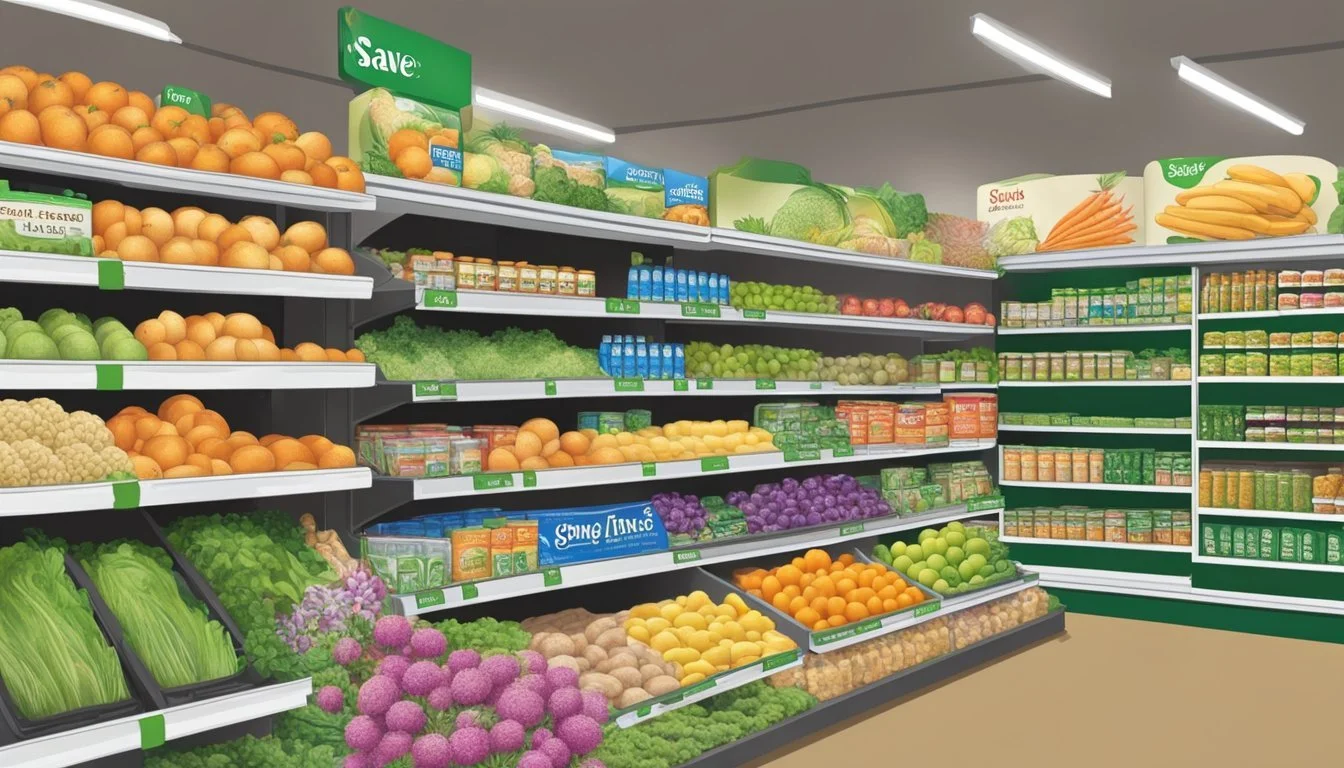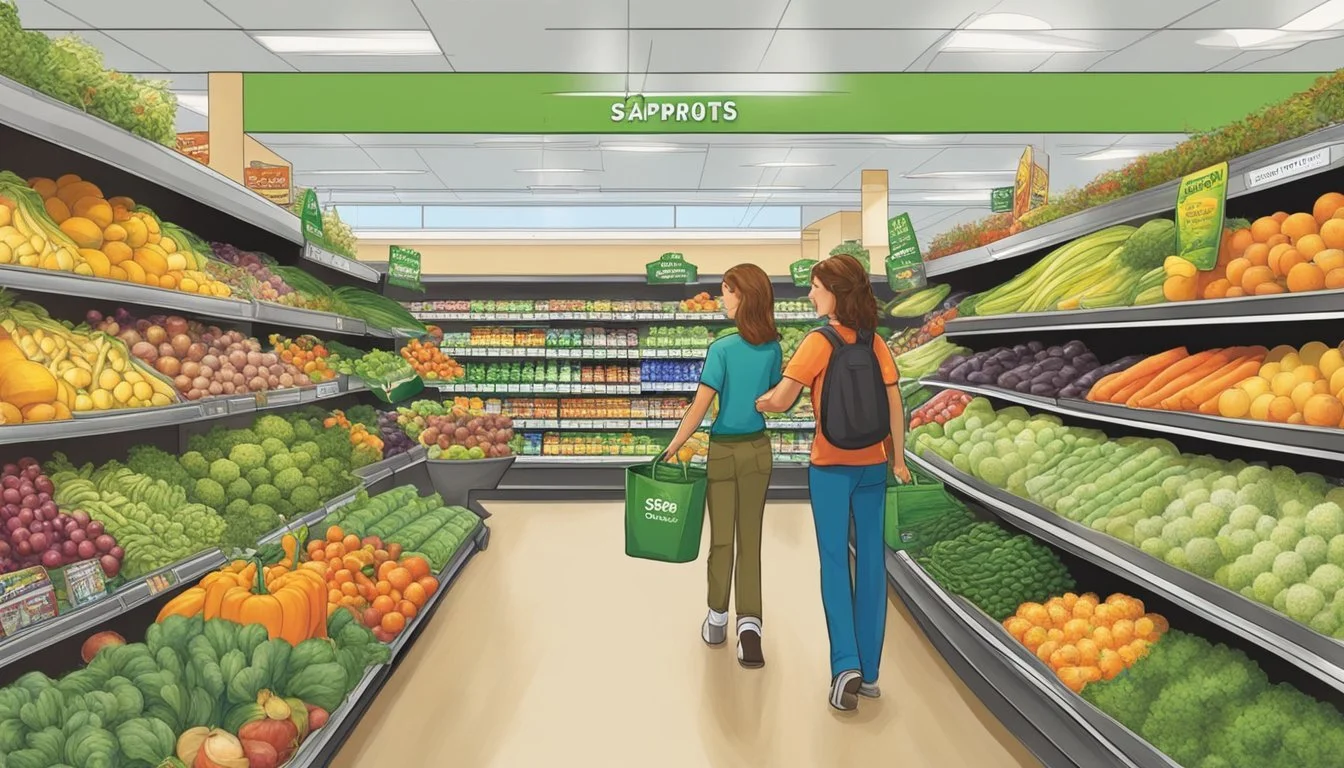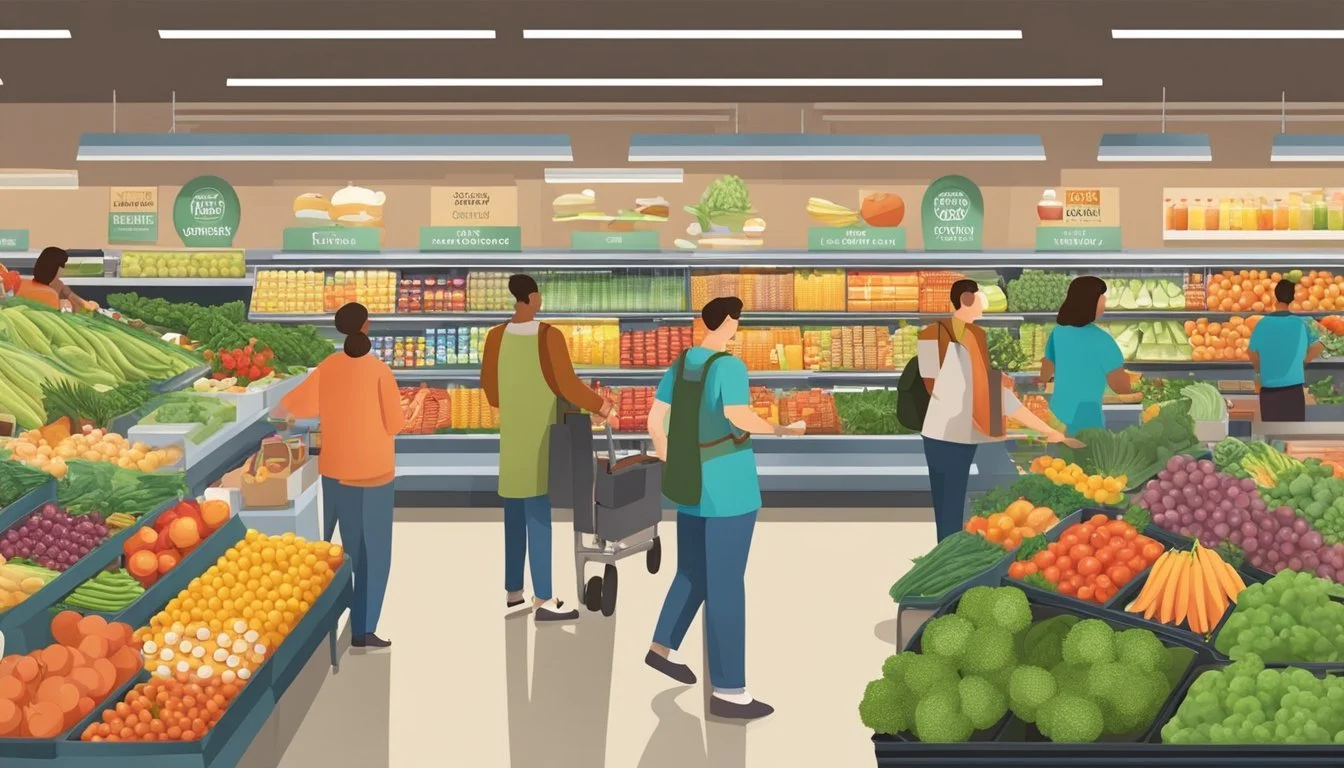Save Mart vs Sprouts
A Comprehensive Comparison of Quality and Value
Save Mart and Sprouts are two popular grocery store chains that offer different shopping experiences for consumers. Both stores aim to provide quality products, but they cater to distinct market segments.
While Save Mart focuses on offering a wide range of conventional grocery items at competitive prices, Sprouts specializes in natural and organic products with an emphasis on fresh produce. This fundamental difference sets the stage for a comparison between these two supermarket options.
Shoppers seeking the best value for their groceries may find themselves weighing the pros and cons of each store. Factors such as product selection, pricing, store atmosphere, and customer service all play a role in determining which grocery store better suits individual needs and preferences.
History and Background
Save Mart and Sprouts Farmers Market have distinct origins rooted in family entrepreneurship. Both companies evolved from humble beginnings to become significant players in the grocery retail landscape.
Save Mart Origins
Save Mart Supermarkets began in 1952 when Nick Tocco and Mike Piccinini opened their first store in Modesto, California. The founders focused on providing quality products at competitive prices.
Save Mart expanded steadily throughout Northern California and Nevada over the decades. By the 1970s, the company had established a strong regional presence.
In 2007, Save Mart acquired Albertsons stores in Northern California and Nevada, significantly increasing its footprint. This move helped cement Save Mart's position as a major grocery retailer in the region.
Evolution of Sprouts Farmers Market
Sprouts traces its roots to Henry Boney, who started selling fruit in San Diego in 1943. The Boney family opened various grocery chains, including Boney's, Henry's, and Windmill Farms.
In 2002, Stan and Shon Boney, along with Kevin Easler, launched the first Sprouts Farmers Market in Chandler, Arizona. The store focused on natural and organic products at affordable prices.
Sprouts expanded rapidly, merging with Henry's Farmers Markets in 2011. This merger accelerated growth and increased brand recognition. By 2020, Sprouts had grown to 340 stores across 22 states, establishing itself as a national health food retailer.
Store Locations and Accessibility
Save Mart and Sprouts have distinct geographic footprints, with varying levels of accessibility for shoppers. Their store presence differs significantly in terms of total locations and regional focus.
Save Mart Store Presence
Save Mart operates primarily in California's Central Valley and Northern Nevada. The chain has around 200 stores across these regions. Save Mart's strongest presence is in cities like Fresno, Modesto, and Sacramento.
The company focuses on serving mid-sized towns and suburban areas. This strategy allows Save Mart to maintain a strong local presence in its core markets.
Sprouts Market Coverage
Sprouts Farmers Market has a wider geographic reach than Save Mart. The chain operates approximately 340 stores across 23 states. Sprouts has a significant presence in the southwestern United States.
The company's store count has grown rapidly in recent years. Sprouts often targets health-conscious communities and areas with higher average incomes.
Convenience in Arizona, California, and Texas
In Arizona, California, and Texas, Sprouts offers greater convenience due to its larger number of locations. These three states represent Sprouts' core markets.
• Arizona: 40+ Sprouts stores • California: 120+ Sprouts stores • Texas: 50+ Sprouts stores
Save Mart's presence is limited to California, with no stores in Arizona or Texas. This makes Sprouts more accessible for shoppers in these states seeking natural and organic products.
Sprouts' expansion strategy focuses on entering new markets, while Save Mart concentrates on deepening its presence in existing areas.
Product Range and Availability
Save Mart and Sprouts offer distinct product selections to cater to different customer preferences. Their offerings vary in terms of fresh produce, organic options, deli items, meats, and packaged goods.
Fresh Produce and Organic Selection
Sprouts Farmers Market excels in fresh produce and organic offerings. Their stores dedicate a large portion of floor space to fruits and vegetables. Organic options are abundant, with a wide variety of seasonal and specialty items available.
Save Mart provides a standard produce section with a mix of conventional and organic options. Their selection is more limited compared to Sprouts but covers most everyday fruits and vegetables.
Sprouts often features unique or hard-to-find produce items, appealing to health-conscious shoppers and those seeking variety. Save Mart focuses on staple produce items at competitive prices.
Deli and Meat Quality Comparison
Save Mart offers a full-service deli counter with prepared foods, sliced meats, and cheeses. Their meat department provides a range of options, including both conventional and some organic choices.
Sprouts' deli section is smaller but emphasizes natural and organic options. Their meat department focuses on antibiotic-free, hormone-free, and grass-fed selections.
Save Mart typically has a broader selection of deli items and prepared foods. Sprouts caters to health-conscious consumers with specialty meats and vegetarian options.
Grocery Staples and Packaged Goods
Save Mart provides a comprehensive selection of grocery staples and packaged goods. They stock a wide range of national brands alongside their store brand products.
Sprouts offers a more curated selection of packaged goods, focusing on natural and organic brands. Their inventory includes specialty diet items like gluten-free, vegan, and non-GMO products.
Save Mart's packaged goods section resembles a traditional supermarket, with aisles dedicated to various categories. Sprouts arranges products by dietary preference and health focus, making it easier for customers to find specific items.
Both stores carry essential staples, but Save Mart generally offers more variety in conventional packaged goods. Sprouts excels in providing natural and organic alternatives to common grocery items.
Pricing Strategies and Affordability
Save Mart and Sprouts employ distinct pricing approaches to attract shoppers. Their strategies impact overall costs and affordability for consumers seeking quality groceries within budget constraints.
Comparison of Cost Per Pound and Overall Prices
Save Mart typically offers competitive prices on staple items and household essentials. Their per-pound costs for produce and meats often fall in the mid-range compared to other major chains. Sprouts, known for its focus on natural and organic products, generally has higher per-pound prices on specialty items.
For a standard grocery basket, Save Mart tends to be more affordable. A family spending $250 weekly might save 10-15% shopping at Save Mart versus Sprouts. However, Sprouts' bulk bins can provide savings on nuts, grains, and dried goods.
Discounts and Low Price Options
Save Mart provides weekly circular deals and digital coupons to help customers reduce costs. Their loyalty program offers additional savings on frequently purchased items. Sprouts runs regular promotions on organic produce and vitamins, with Wednesday double-ad days providing extra value.
Both stores offer store-brand alternatives at lower price points than national brands. Save Mart's private label covers a wide range of everyday products, while Sprouts focuses on natural and organic store-brand options. For budget-conscious shoppers, Save Mart's "extreme value" section features deeply discounted items near expiration dates.
Shopping Experience and Customer Service
The shopping experience and customer service at Save Mart and Sprouts differ significantly. Each store aims to provide a unique atmosphere and level of assistance to meet their customers' needs.
Checkout Convenience and Queue Times
Save Mart typically offers both traditional checkout lanes and self-checkout options. This variety allows customers to choose their preferred method, potentially reducing wait times during busy periods. Sprouts Farmers Market also provides multiple checkout options, including express lanes for customers with fewer items. Both stores strive to keep lines moving efficiently, especially during peak shopping hours.
Save Mart has implemented mobile payment systems at many locations, enabling customers to pay quickly using their smartphones. Sprouts accepts various payment methods, including contactless options, to speed up transactions.
Store Cleanliness and Shopping Comfort
Save Mart maintains clean, well-organized stores with wide aisles to accommodate shopping carts and facilitate easy navigation. The layout is designed for efficiency, grouping related products together logically.
Sprouts emphasizes a farmers market feel, with produce displayed prominently in the center of the store. This open layout creates a spacious atmosphere and allows customers to easily browse fresh fruits and vegetables. The store's commitment to cleanliness is evident in its well-maintained displays and floors.
Both retailers prioritize regular cleaning schedules to ensure a hygienic shopping environment for their customers.
Consumer Assistance and Staff Knowledgeability
Save Mart trains its staff to be helpful and courteous. Employees are generally able to assist customers in locating items and answering basic questions about products and store policies.
Sprouts places a strong emphasis on staff knowledge, particularly in specialty departments like vitamins and supplements. Employees often receive extensive training on organic and natural products, enabling them to provide informed recommendations to health-conscious shoppers.
Both stores offer customer service desks for returns, exchanges, and addressing more complex inquiries. Save Mart and Sprouts also provide in-store signage and product information to help customers make informed choices independently.
Sustainability and Ethical Practices
Save Mart and Sprouts both prioritize sustainability and ethical practices, but with different approaches and focus areas. Their efforts encompass organic and natural product offerings as well as environmental initiatives.
Organic Foods and Natural Product Lines
Save Mart carries a selection of organic and natural products, though its focus is primarily on conventional groceries. The store offers organic produce and some natural brands, but the range is limited compared to specialty retailers.
Sprouts Farmers Market, in contrast, specializes in natural and organic foods. The store boasts an extensive lineup of organic produce, meats, and packaged goods. Sprouts' commitment to organic and natural products is central to its business model and brand identity.
Environmental Responsibility and Green Policies
Save Mart has implemented some environmentally friendly practices, such as energy-efficient lighting and refrigeration systems in its stores. The company also participates in local recycling programs and works to reduce food waste.
Sprouts takes a more comprehensive approach to environmental responsibility. The company has set ambitious sustainability goals, including reducing greenhouse gas emissions and increasing waste diversion rates. Sprouts also focuses on sustainable sourcing practices and works with suppliers who share their environmental values.
In 2022, Sprouts published an Environmental, Social, and Governance (ESG) Report highlighting its commitment to sustainability. The report showcased initiatives like donating 37 million pounds of food and awarding $20 million to local nonprofit partners since 2015.
Brand Presence and Market Influence
Save Mart and Sprouts Farmers Market have distinct brand identities and market positions within the competitive grocery landscape. Their reputations and customer perceptions play crucial roles in shaping their influence on consumers.
Supermarket Chains and Competitive Landscape
Save Mart operates primarily in California and Nevada, with around 200 stores under various banners. It competes with regional chains and larger national players. Sprouts Farmers Market has a wider geographic footprint, with over 340 stores across 23 states, focusing on natural and organic products.
In the broader supermarket landscape, both chains face competition from giants like Kroger, which boasts over 2,700 stores nationwide. Trader Joe's, known for its unique product offerings, and Wegmans, praised for customer service, also pose significant competition.
Publix, a strong regional player in the Southeast, has built a loyal customer base through its focus on service and quality. These competitors influence Save Mart and Sprouts' strategies and market positioning.
Consumer Ratings and Reviews
Customer feedback plays a vital role in shaping brand reputation. Sprouts Farmers Market often receives positive reviews for its fresh produce selection and organic offerings. Customers appreciate the store layout and the focus on health-conscious products.
Save Mart garners praise for its competitive pricing and local product selection. Reviews frequently mention the chain's community involvement and long-standing presence in certain areas.
Online ratings platforms show Sprouts with slightly higher overall scores compared to Save Mart. Customers often rate Sprouts higher for product quality, while Save Mart scores well on affordability.
Both chains face occasional criticism. Some customers find Sprouts' prices higher than conventional supermarkets. Save Mart sometimes receives feedback about the need for store updates or expanded organic selections.
Conclusion
Save Mart and Sprouts both offer unique advantages for grocery shoppers. Save Mart provides a wide selection of conventional products at competitive prices. Their extensive store network makes them convenient for many customers.
Sprouts excels in natural and organic offerings, with an emphasis on fresh produce and bulk foods. Their stores have a more specialized, health-focused atmosphere.
For everyday staples and name brands, Save Mart often has lower prices. Sprouts tends to be more expensive overall but can offer good deals on produce and store-brand items.
Save Mart is better suited for one-stop family shopping. Sprouts appeals more to health-conscious consumers and those seeking specialty products.
The best choice depends on individual priorities. Budget-focused shoppers may prefer Save Mart. Those emphasizing organic options and produce quality might lean towards Sprouts.
Both stores have loyal customer bases. Save Mart scores well on convenience and value. Sprouts ranks highly for product quality and health-oriented selections.
Ultimately, many shoppers use both stores - Save Mart for basics and Sprouts for select items. Trying each store firsthand is recommended to determine personal preferences.









